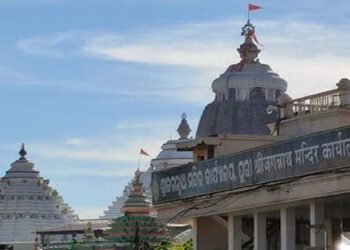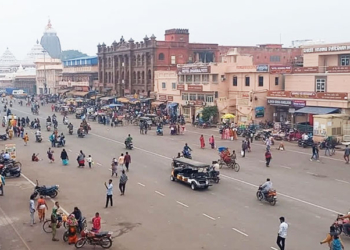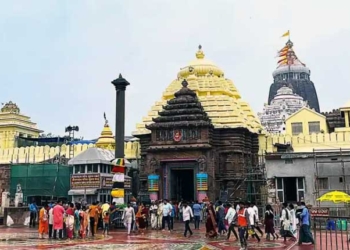Puri: The much-anticipated restoration of the Ratna Bhandar, the treasure vault of the Shree Jagannath Temple in Puri, has been successfully completed. Both the bhitara (inner) and bahara (outer) chambers of the sacred vault underwent structural repairs under the meticulous supervision of the Archaeological Survey of India (ASI).
The repair and restoration work, which commenced on September 18, 2024, spanned a total of 95 days, amounting to 332 hours and 47 minutes of concentrated effort. This information was shared on Monday by Dr. Arabinda Kumar Padhee, Chief Administrator of the Shree Jagannath Temple Administration (SJTA), during a media briefing in Puri.
According to Dr Padhee, laser scanning was conducted prior to the restoration to assess the existing condition of the centuries-old structure. The repairs focused on ensuring the safety, structural integrity, and longevity of both vaults. Sessions were conducted carefully, lasting anywhere from two to 18 hours per day, depending on the requirements of each phase.
During the restoration and conservation process, damaged stones were repaired and reinforced using grouting and granite. A total of 15 stainless steel supports were installed both inside and outside the Ratna Bhandar to enhance its stability. Special attention was also given to the vault doors: the outer iron gate, originally constructed 200 years ago, has been replaced with a new stainless steel door, while the inner door will be silver-plated after being structurally restored.
Dr Padhee emphasized that all restoration activities were carried out with utmost care to preserve the sanctity and historical value of the site.
He noted that as per the Standard Operating Procedure (SoP) prepared by the state government, the inner and outer chambers of Ratna Bhandar were opened on July 14, 2024.
He further added that the shifting of precious ornaments, blank trunks and iron chests were shifted from the Ratna Bhandar to designated separate temporary strong rooms inside the temple premises between July and September last year.
The Inspection and technical survey, including laser scanning and radar penetration survey of the Ratna Bhandar, was started after receipt of fresh SoP from the state government.
The technical survey team of Hyderabad-based CSIR-National Geophysical Research Institute conducted the technical survey of the inner and outer chambers of Ratna Bhandar using the latest advanced scientific and technical tools.
The inspection and survey work were completed in September. Based on the report submitted by the technical team, ASI began repair and restoration work on 17 December 2024.
The first phase of repair and restoration work continued from 17 December 2024 till April 28, 2025. The renovation work again started on June 28 this year and was completed on Monday.
Dr Padhee said that the inventory of ornaments and precious jewellery will be carried out after the shifting of the valuables back to the Ratna Bhandar.
The successful completion of this work marks a significant step in the broader preservation efforts of one of India’s most revered heritage temples.















